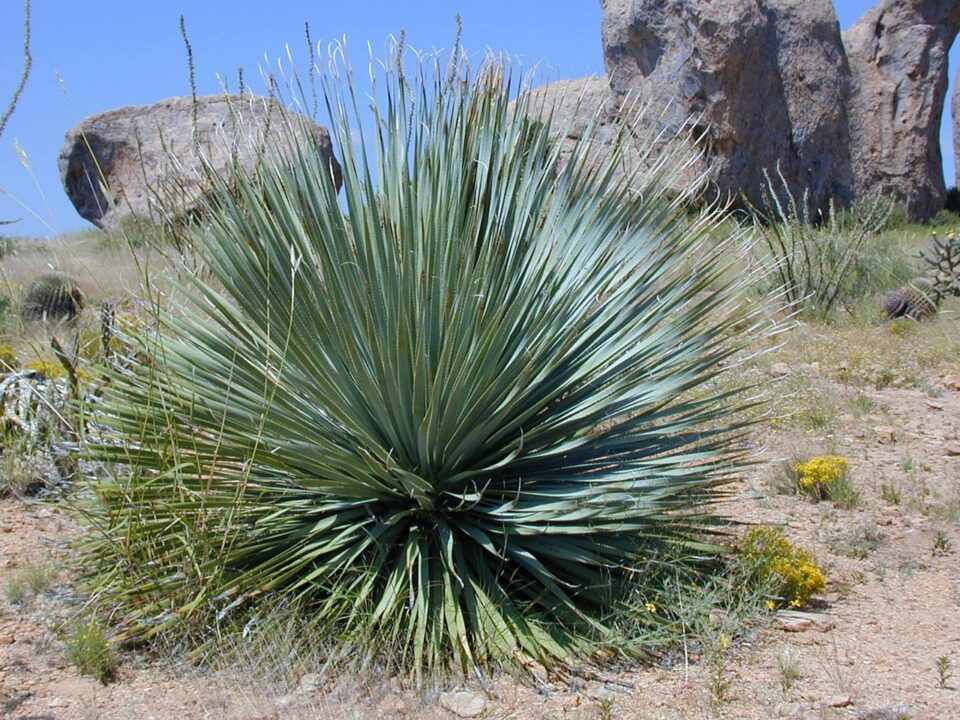Before we look into indoor plants similar to yucca, let’s have a good knowledge of what yucca plants are.
Yucca plants are a kind of succulent plant that is native to the hot, arid regions of Mexico and the Southwest of the United States. Their leaves are long and sword-like, and they can reach a height of twenty feet. The fragrant, white, bell-shaped blossoms of the yucca plant are another of its well-known features. Yucca plants are not only exquisitely attractive but also incredibly low-maintenance and drought-tolerant.
Yucca plants also have an innovative way of pollinating themselves. Yucca plants have evolved to depend on a particular kind of moth for pollination of their flowers rather than bees or other insects. The only kind of insect that can pollinate yucca plants is the yucca moth. The yucca plant cannot reproduce without the yucca moth. Isn’t that intriguing?
11 indoor plants similar to yucca
Now that we’ve gotten a good knowledge of yucca plants, let’s look at some indoor plants similar to yucca.
1. Aloe Vera
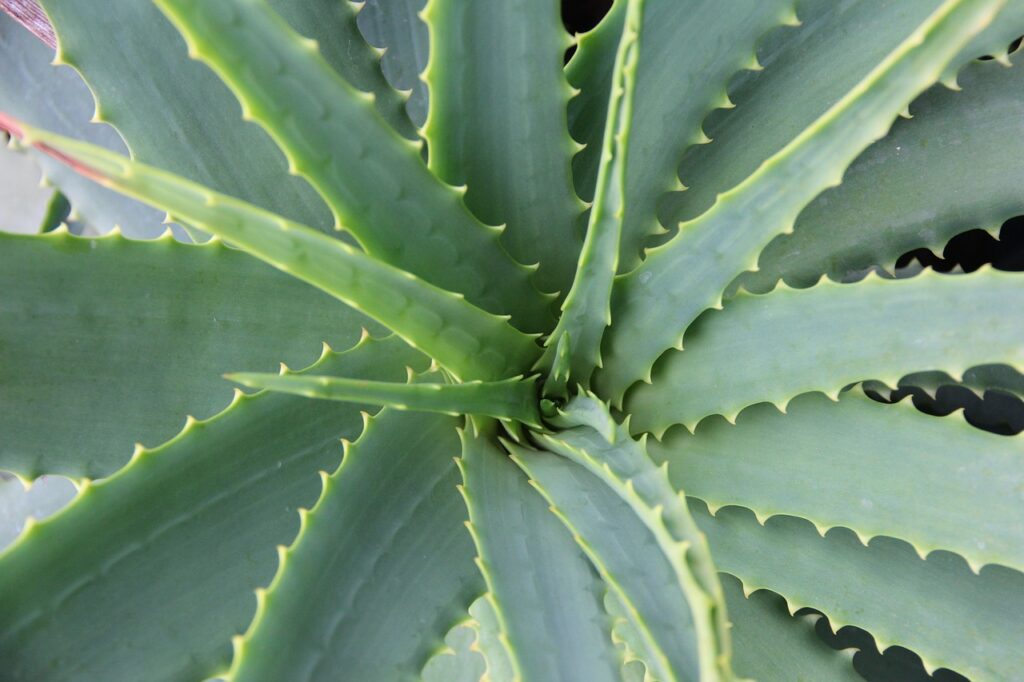
The aloe vera is an indoor plant similar to the yucca. Aloe barbadensis Miller, popularly known as Aloe vera, is a succulent plant that is being used for its therapeutic qualities.
Aloe vera, like yucca plants, likes bright, indirect sunshine and little to no watering. Both plants require little care and are easy to maintain. Nonetheless, yucca plants can grow up to 30 feet tall, while aloe vera plants are normally just 1-2 feet tall.
2. Snake plants
The snake plant, often known as the Sansevieria plant, is another indoor plant similar to yucca. Snake plants are distinguished by their long and thin leaves, which resemble yucca plants and are grouped in a rosette arrangement.
With only strong, indirect sunlight and little watering needed, they also require very low maintenance. Snake plants and yucca plants differ primarily in that the former demand somewhat drier soil, while the latter prefer slightly moist soil.
Yucca and snake plants grow in similar ways. Both plants develop slowly; it will take them several years to reach their maximum growth. Additionally, they are both regarded as “drought-tolerant” plants, which means they can withstand dry seasons or sporadic irrigation. These plants are ideal for anyone looking for a low-maintenance indoor plant that can flourish with little to no care.
3. ZZ plant
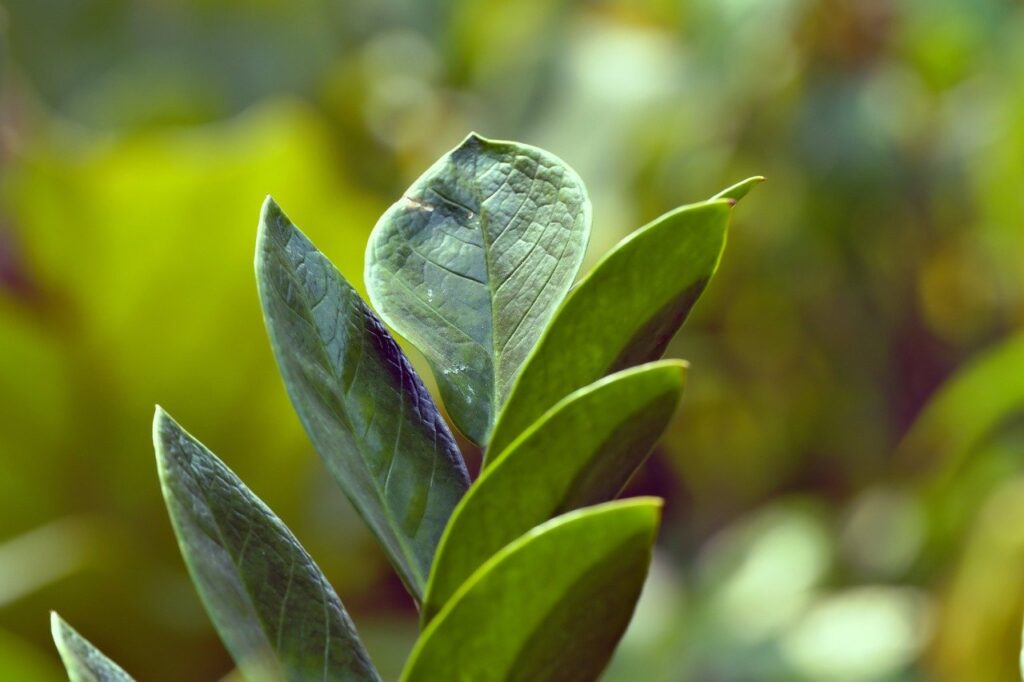
Another indoor plant similar to yucca plants is Zamioculcas zamiifolia, also called the ZZ plant. ZZ plants feature rosette-shaped, thick, meaty leaves, just like yucca plants do. ZZ plants are a fantastic option for folks who forget to water their plants because they are even more drought-tolerant than yucca plants. In addition, unlike most plants, ZZ plants grow their new leaves from the base of the plant rather than the tips.
4. Jade plant
Jade plants, also known as Crassula ovata, are indoor plants similar to yucca. Similar to yucca plants, jade plants are distinguished by their rosette-like arrangement of thick and meaty leaves.
Additionally, they grow similarly, with new leaves appearing at the base of the plant. Nevertheless, jade plants are often only a foot or so tall, far smaller than yucca plants. Jade plants need strong, direct sunlight to flourish, just like yucca plants do.
5. Ponytail palm
Another kind of indoor plant similar to the yucca plant is the ponytail palm, or Beaucarnea recurvata. The term “ponytail palm” comes from the long, thin leaves that resemble a ponytail and grow in a rosette arrangement.
Ponytail palms tolerate droughts just as well, but they cannot withstand freezing temperatures like yucca plants can. These plants develop slowly as well. It will take years for them to reach their maximum size.
6. Money tree
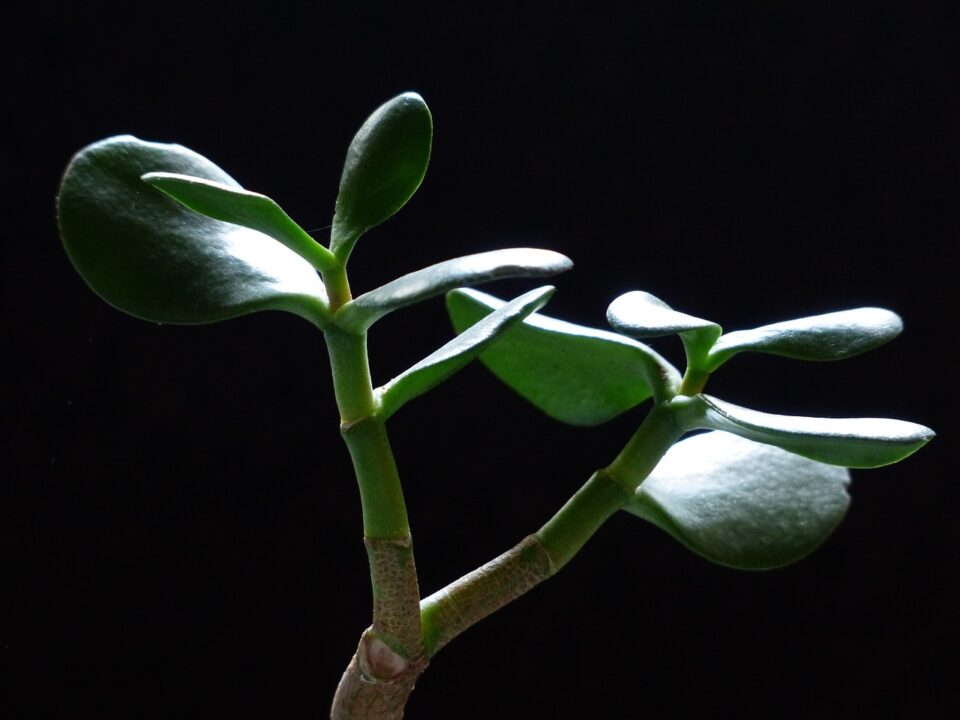
Another indoor plant similar to yuccas is the money tree, also known as Pachira aquatica. Money trees are often distinguished by their long and thin leaves, much like yucca plants.
Nonetheless, money trees have spiral-shaped leaves that are more fragile than those of yucca plants. The moniker “money tree” comes from its reputation for drawing wealth and good fortune. They are also regarded as easy to care for and are low-maintenance plants.
7. Pothos plant
The Pothos plant, also known as Epipremnum aureum is an indoor plant similar to yucca While yucca plants form rosettes, pothos plants have long, thin leaves that are arranged in a trailing manner.
Pothos plants are a popular option for indoor plants because of their reputation for air purification. Additionally, they require little care and can endure low light levels. But unlike yucca plants, they require frequent watering because they are not drought-tolerant.
8. Peace lily
Another indoor plant similar to the yucca plant is the peace lily, or Spathiphyllum. The distinctive white, spiky flowers of peace lilies resemble the blossoms of yucca plants in shape. But compared to yucca plants, peace lilies are significantly smaller, usually growing to a height of just two feet.
Another low-maintenance plant that does well in bright, indirect light is the peace lily. They are also renowned for their ability to filter the air, much like pothos plants.
9. Dracaena plant
Another indoor plant similar to yuccas is the dracaena plant, or Dracaena sanderiana. Similar to yucca plants, dracaena plants feature long, thin leaves grouped in a rosette pattern. But dracaena plants only reach a height of approximately one foot, making them substantially smaller than yucca plants.
Dracaena plants are a common option for indoor plants because of their reputation for eliminating pollutants from the air. Additionally, they require little maintenance and enjoy bright, indirect light.
10. Parlor palms
Another plant that resembles the yucca plant is the parlor palm, or Chamaedorea elegans. Though their leaves are much softer and more delicate, parlor palms have a rosette leaf design that is similar to that of yucca plants.
Furthermore, parlor palms grow to a maximum height of approximately three feet, which is significantly smaller than yucca plants. They are a well-liked option for indoor plants and are also well-known for their air-purifying qualities. Parlor palms require little maintenance, just like the yucca, and thrive in bright, indirect light.
11. Spider plant
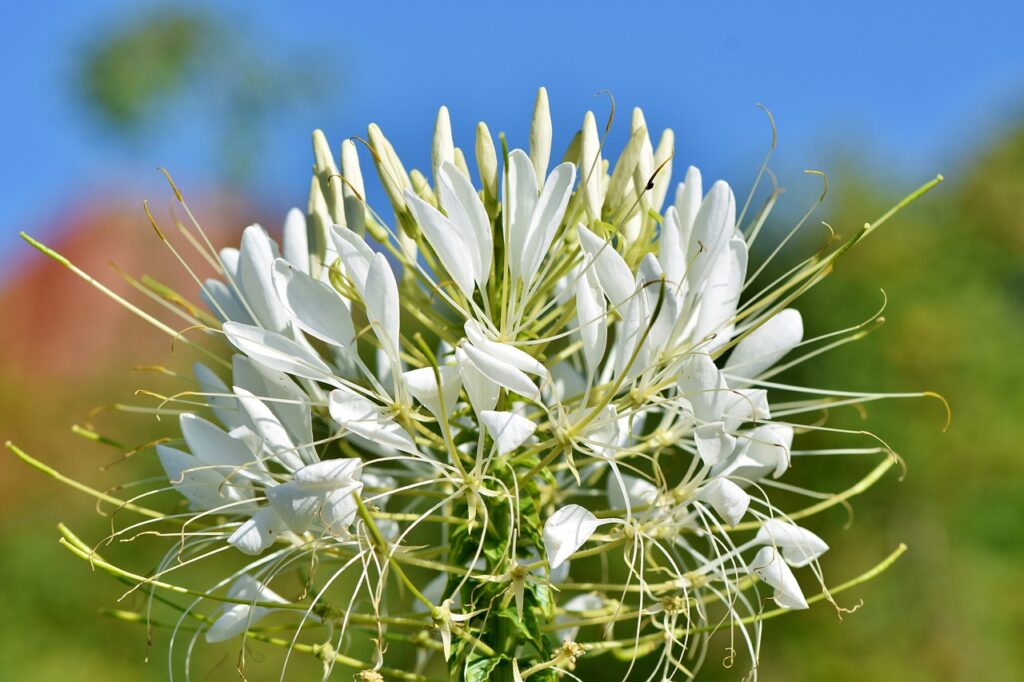
The spider plant is another indoor plant similar to yucca. The spider is also known as Chlorophytum comosum. The term “spider plant” comes from the long, thin leaves that resemble the legs of a spider. They are frequently used as indoor plants and are well renowned for their ability to filter the air.
They resemble yucca plants in their rosette leaf design as well, although they are considerably smaller, usually growing to a height of barely a foot or two. Spider plants require relatively little care and are tolerant of many different kinds of light.
Yucca as an indoor plants
It is possible to cultivate yucca indoors. Numerous yucca species, like Yucca aloifolia, are great houseplants. These plants do best in direct sunlight and with little to no irrigation.
It’s vital to remember that yucca plants are poisonous to dogs and cats; therefore, keeping them in households with pets is not advised. It’s crucial to handle yucca plants carefully because their pointy leaves might irritate people’s skin.
When taking care of an indoor yucca plant, there are a few things to consider.
Firstly, the plant should be placed in a bright area with at least six hours of direct sunlight each day.
Secondly, watering the plant should only occur when the top inch of soil feels completely dry.
Finally, a general-purpose fertilizer should be applied to the plant once or twice a year. Your indoor yucca plant will flourish with the right care.
Benefits and Uses of Yucca plants
There are so many benefits and uses for yucca plants. Yucca plants offer several benefits beyond just being beautiful and very easy to maintain.
As a case study, the yucca plant’s leaves can be used to manufacture soap, and its roots can be used to make shampoo.
Furthermore, the yucca plant is well-known for its therapeutic qualities. A number of illnesses, such as fever, diarrhea, and arthritis, have been treated with the leaves and blooms of the yucca plant.
The yucca plant is also significant because of its ecological function. In many habitats, yucca plants are keystone species, which means they are essential to preserving the ecosystem’s stability.
Diverse kinds of animals, such as birds, insects, and mammals, can find food and shelter in the yucca plant. The yucca plant also aids in soil stabilization and inhibits soil erosion.
The Native Americans have also greatly benefited from the yucca plant. The yucca plant had several functions for the Navajo people, such as food, fiber, and medicine.
Additionally, the natives make sandals and other clothing items out of the roots of the yucca plant. The yucca plant is also greatly used during rites and festivities. It’s genuinely astounding how one plant has played such a significant role in society.
Conclusion
In conclusion, peace lilies, parlor palms, spider plants, and rubber plants are just a few of the many indoor plants similar to yucca plants.
All of these plants are excellent options for indoor plants since they require little maintenance and are simple to look after. Many of these plants also have air-purifying qualities, which can enhance the quality of the air in your house. All in all, any of these choices would be excellent if you’re searching for a plant that is similar to the yucca plant.
